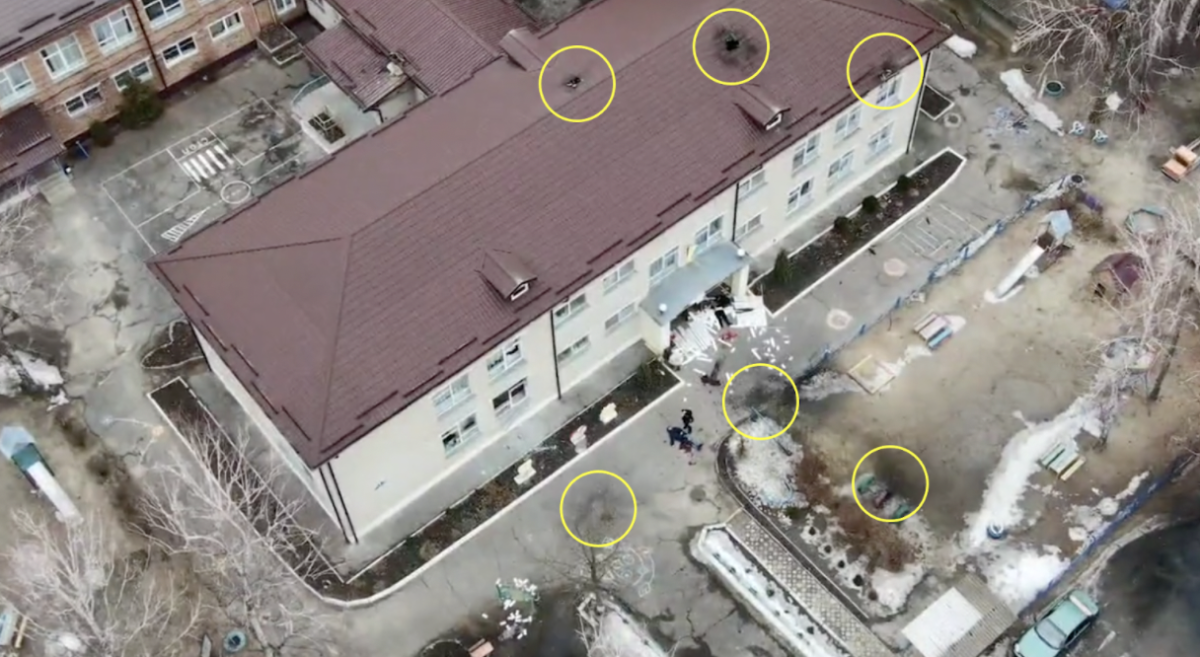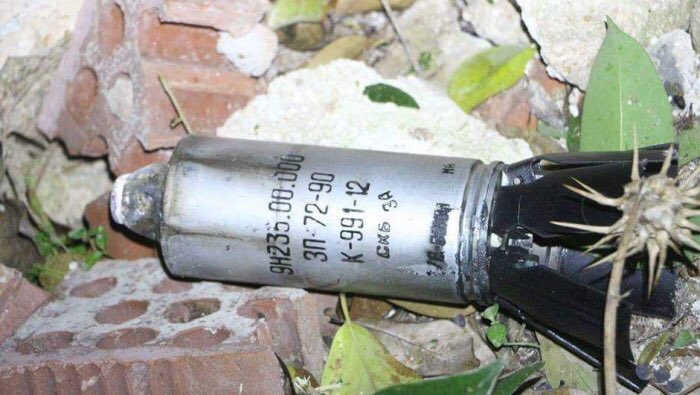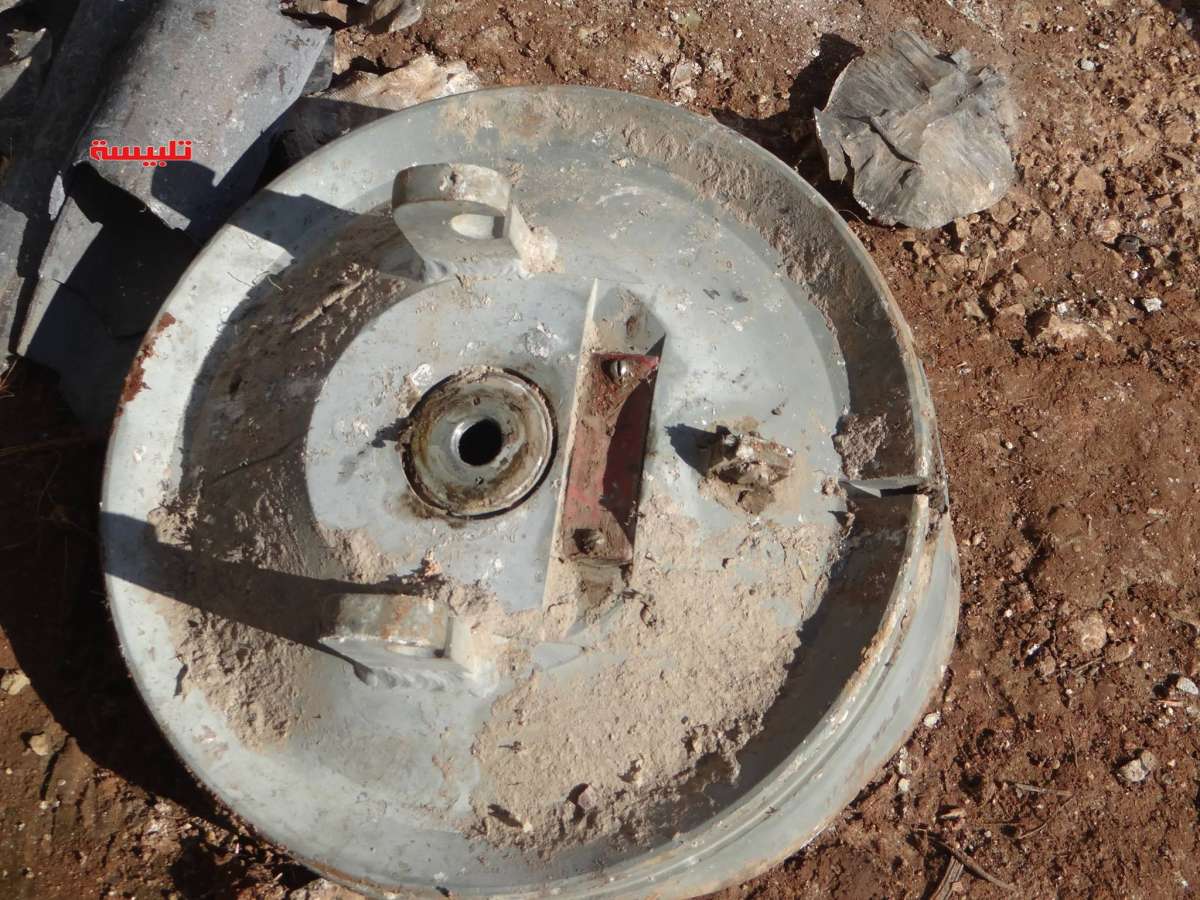These are the Cluster Munitions Documented by Ukrainian Civilians
Over the course of the first 13 days of Russia’s invasion of Ukraine, civilian deaths have risen steeply. There have been multiple, verifiable incidents of cluster munitions being used in urban areas.
Cluster munitions are a type of weapon that deploy a large number of smaller sub-munitions over a target. These sub-munitions then spread and explode over a larger area, increasing the potential for casualties.
Therefore cluster munitions are often criticised as weapons that pose “an immediate threat to civilians during conflict” and for the “long-lasting” problems they can cause if sub-munitions do not explode upon first impact.
More than 100 countries have banned their use and signed up to the Convention on Cluster Munitions. However, neither Russia nor Ukraine (which also possesses cluster munitions) has put their name to this agreement.
Russia has continued to use them, most notably in eastern Ukraine in 2014 and later in Syria.
Ukraine denied using cluster munitions during the conflict with Russian-backed separatists in the east of the country in 2014, despite a Human Rights Watch (HRW) report that stated it likely had.
In recent weeks, Bellingcat has documented these weapons landing near schools, hospitals and in residential areas of Ukrainian cities such as Kharkiv, Odesa and Kherson, seemingly often far away from noticeable military targets.
Due to concerns around the significant civilian harm cluster munitions can cause, Bellingcat is tracking the use of these weapons inside Ukraine.
We have identified several types of cluster munitions used in attacks on Ukrainian villages, towns and cities.
Identifying the type of cluster munitions being used can, in some cases, help provide clues as to who is using them. How and where they land can also help identify where they are being fired from.
Below are the types of cluster munition we have seen so far. We encourage readers who have noticed uses of these, or other types of cluster munitions, to reply to our Twitter thread here to help us collect, archive and investigate further.
RBK-500 Unguided Cluster Bomb with PTAB-1M Submunitions
So far, only one example of a aircraft-dropped cluster munition has been documented in Ukraine since the start of the invasion in late February, the RBK-500 cluster bomb loaded with PTAB-1M Submunitions (a high-explosive anti-tank munition). The following video, filmed in Zatoka, Odesa by Ukraine’s State Emergency Service, shows the remains of an RBK-500 cluster bomb, loaded with PTAB-1M Submunitions, inside the city’s White House Hotel (46.0635136, 30.44085,15).
The RBK-500 cluster munition has seen widespread use in the conflict in Syria, including RBK-500 ZAB-2.5M, RBK-500 AO-2.5RT, RBK-500U and RBK-500 PTAB-1M variants, but so far the documented use of the munition in Ukraine has been rare.
9M54 Series Missile with 3B30 HEAT-FRAG (DPICM) Submunitions
Cluster munition use in Ukraine thus far appears to have been dominated by the deployment of surface-to-surface rockets and missiles, including the 9M544 missile.
The remains of this missile were documented in Pokrovsk, northwest of Russian-controlled Donetsk in Eastern Ukraine, and Chornomors’ke village in Kherson, near Russian-occupied Crimea.
Pokrovsk, Tornado-S cluster munition container pic.twitter.com/sPH1y36BX5
— OSINTtechnical (@Osinttechnical) March 4, 2022
These are remains of cluster munitions launched by a 9A52-4 Tornado multiple rocket launcher, only used by Russian forces, that landed on the Ukrainian village of Chornomorske, Kherson. We've dozens of these incidents using Russian cluster munitions in civilian population centres https://t.co/289KQrTnEs pic.twitter.com/scU46s3Zvz
— Eliot Higgins (@EliotHiggins) March 9, 2022
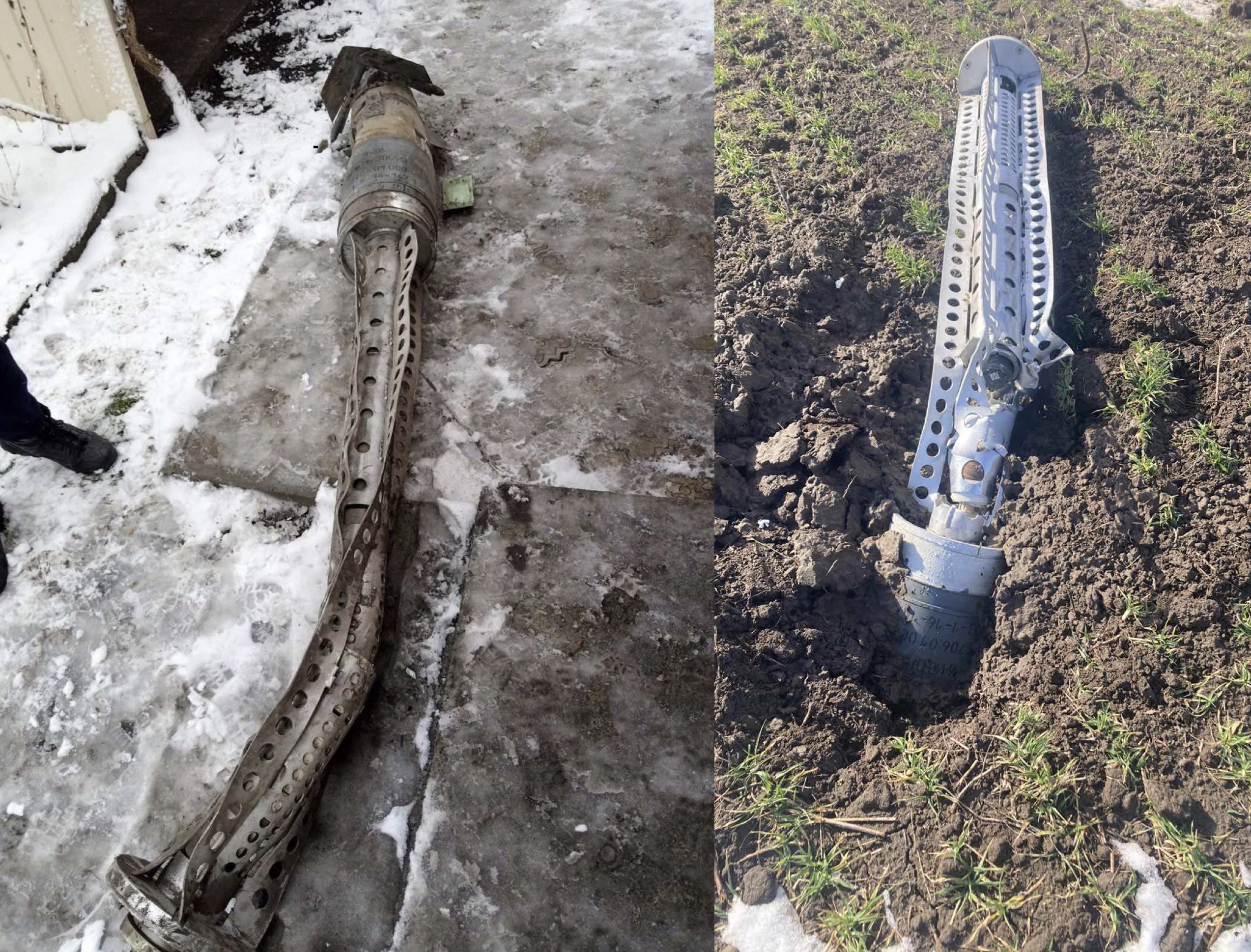
Left: the remains of a Russian 9M54-series guided missile photographed in Pokrovsk Right: remains of the same type of missile photographed on March 8 street in Chornomors’ke.
While no submunitions were documented with the example from Pokrovsk, the remains of Russian 3B30 submunitions (a high-explosive anti-tank fragmentation munition) were documented at the site of the Chornomors’ke village attack, as seen in the below video.
Close up images of the 3B30 submunition, and the submunitions that had failed to deploy correctly were shared with Bellingcat by locals from Chornomors’ke.
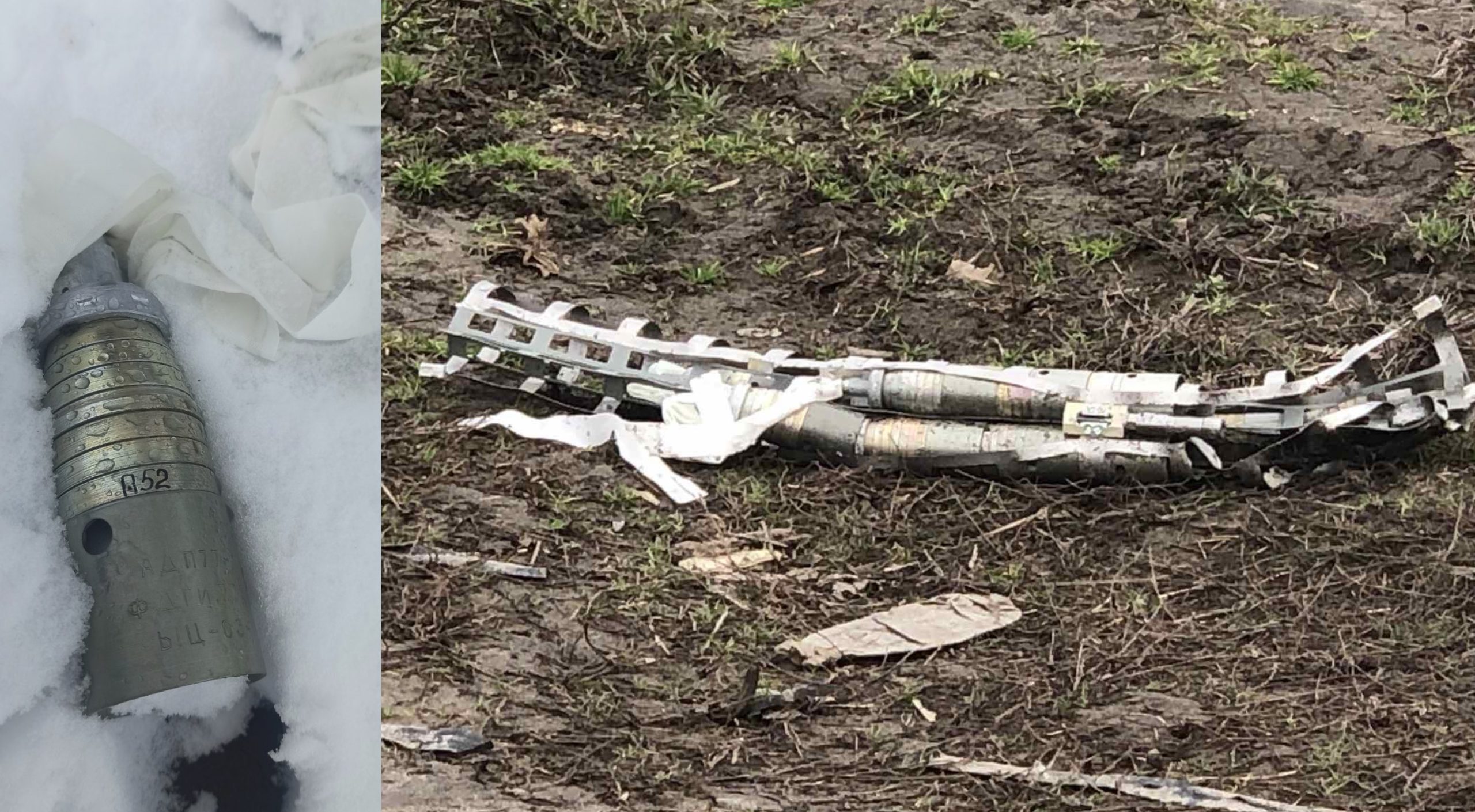
Left, the remains of a 3B30 submunition; Right, undeployed submunitions. Source: Bellingcat.
It should be noted that the 9M54 series missiles are guided missiles, with a reported circular area of probability (the radius of a circle within which half of a missile’s projectiles are expected to fall) of seven to 15 metres, compared to 150 metres for the unguided 9M55 series rockets (discussed below) used by BM-30 Smerch multiple rocket launchers.
The 9M54 series rockets are used only by Russian forces, having been deployed in a recent programme to upgrade Russia’s multiple rocket launcher systems.
Smerch 9M55K and Uragan 9M27K Cluster Rockets with 9N210 or 9N235 Submunitions
The most common types of cluster munition documented in the conflict has been the 9M55K and 9M27K cluster rocket fired by BM-30 Smerch and BM-27 Uragan multiple rocket launchers. These cluster munitions were frequently used by both sides in the 2014 conflict in Ukraine, as documented by Human Rights Watch in a June 2015 report. They are now being documented in locations across Ukraine, most frequently in the city of Kharkiv.
Both rockets are similar in appearance, the most distinctive difference being the configuration of the tail fins, and the position of rows of holes on the cluster munition container, visible after it has deployed.
We’re seeing a lot of images of cluster munitions being used in Ukraine, so there’s a few things I want to highlight to assist with reporting of the incidents. There’s two types of rockets, fired by BM-27 and BM-30 multiple rocket launchers. pic.twitter.com/j87onDj6kk
— Eliot Higgins (@EliotHiggins) February 28, 2022
The 9N210 and 9N235 submunitions carried by the rockets are outwardly identical, with the manufacturing markings being the key indicator of the specific type of submunition used (for example, if it is 9N210 or 9N235 this is noted on the outside casing). It is notable that submunitions documented at the scene of attacks have markings indicating dates of manufacture after Russia ceased arms sales to Ukraine:
A verified image first acquired by @bellingcat shows the attack included Russian-manufactured 300mm Smerch rockets with 9N235 cluster munitions. The 2019 manufacture date, after Russia stopped selling these arms to Ukraine, indicates that the attack was launched by Russia. pic.twitter.com/pvFsAq3kfB
— Amnesty International (@amnesty) March 3, 2022
9M79-series Tochka Ballistic Missile with a 9N123 Cluster Munition Warhead
Along with the shorter ranged 9M27, 9M54 and 9M55 series rockets and missiles, longer range ballistic missiles have been used to deliver cluster submunitions in Ukraine. The remains of 9M79-series Tochka ballistic missiles have been documented in several locations in Ukraine. In one incident, it was possible to identify the payload of one of those missiles as containing cluster submunitions.
On February 24, at a hospital just outside the town of Vuhledar, Human Rights Watch reported that four civilians were killed, and 10 wounded, after a cluster munition attack using a Tochka ballistic missile armed with a 9N123 cluster munition warhead struck the area around the hospital:
This is currently the only incident Bellingcat is aware of where a Tochka ballistic missile armed with a cluster munition warhead has been used in the conflict. In its aftermath, Human Rights Watch said Russian forces should “stop using cluster munitions” and halt the use of weapons that “indiscriminately kill and maim.”
Iskander-M 9M723 Ballistic Missile
Most recently, on March 9, the remains of a cluster variant of an Iskander-M 9M723 missile were documented by local police in the city of Kramatorsk, north of Donetsk, as having been shot down by the Ukrainian military. This is the first documented sighting of a cluster variant of an Iskander launched missile. These powerful weapons have a range of several hundred kilometres.
На Краматорський район було випущено оперативно-тактичний ракетний комплекс «Іскандер»: будьте обережні з вибуховими предметами https://t.co/VkP655AAbG pic.twitter.com/Y0jGj3KNht
— Поліція Донеччини (@gumvd_don) March 9, 2022
Submunitions have yet to be documented in relation to this attack but the remains of the munition clearly indicate that it is the cluster munition variant of the missile.
If you see any sources showing indications of cluster munitions, please reply to our Twitter thread here.
